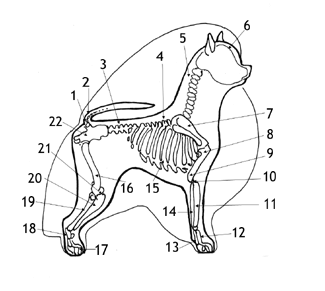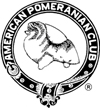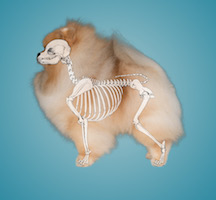The skeleton is a system of bony levers moved by muscles which are anchored at crucial points on the bones, The bones are linked together at joints which act like shock absorbers. Bones have a complicated structure which gives great stability and yet allows movement. They are anchored by ligaments which permit a given degree of movement in specific directions. Each joint is surrounded by a joint capsule which contains the joint lubricant, synovial fluid. The ends of the bone involved in the joint are covered in cartilage – a smooth surface which helps the joint move easily and helps to absorb any concussion as the dog’s weight comes down on the leg.
Skeleton

1. Coccygeal vertebra
2. Sacrum
3. Lumbar vertebra
4. Thoracic vertebra
5. Cervical vertebra
6. Skull
7. Scapula
8. Shoulder joint
9. Humerus
10. Elbow joint
11. Radius
12. Carpus
13. Metacarpals
14. Ulna
15. Ribs
16. Femur
17. Metatarsals
18. Tarsus
19. Fibula
20. Tibia
21. Stifle
22. Pelvis
Musculature

1. Gluteus and muscles which move
the hip joint
2. Latissimus dorsi
3. Brachiocephalicus (neck muscles)
4. Muscles which move the shoulder
5. Triceps (extends elbow)
6. Extensors of foot
7. Pectorals
8. Muscles which flex the hip to move the
leg forward
9. Biceps femora’s and muscles which extend
the leg
Teeth
Of a dog’s 42 teeth, 6 pairs are incisors, and two pairs are canine teeth. The remaining teeth are molars. Traditionally, the most important teeth for the dog were the incisors and the canines, because they helped the dog rip and bite his food.



